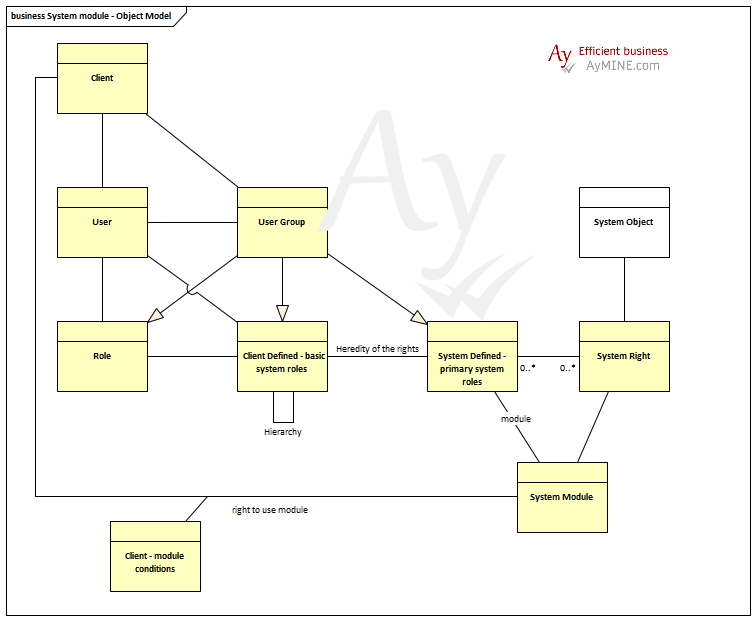Related links
Sales & Asset management
Sales related services
Description of a part of the AM module - sales partFI - Finance Management
Framework Core functionality
- AyMINE Framework Server
- frmFrm – provided functionality
- System Rights
- System messaging
- AyMINE Business – Price calculation
- Strings and translations
- Export collection of objects
- AyMINE Framework management FAQ
- The AyMINE licence model
- AyMINE On-premise
- System events
- Mutli-client architecture
- Import collection of objects
- User sessions
- Default server methods
- Client-defined object attributes
- Common Libraries
Module - support for management
Libraries & Lincences
Mobile & Web Application
- Runtime debugging
- System console
- AyMINE Application
- In-line table edit support
- Object scripting API – object lang
- Application object structure
- Multilingual support
- View of a single object – detail
- Is using EVAL / feval method risky?
- Included library – String operations
- Cliplink
- Object API – object <g>
- API – Data object
- Object scripting API – object User
- Object view definition
- Framework support for Drag & Drop
- Common libraries
- Multiple-object update implementation
- fClip & fCliplist
- Offline persistent objects
- Mobile application
HR - Human Resources
System Management (part of framework)
Task, Project, Quality
Task & Task pattern
CMS - Content Management & Web API services
Front-End Scripting
 System management module
System management module 
System management is the management part of the AyMINE® Business edition. The business edition is available as the commercial product available for independent business system developers and for company-managed internal application development.
Published technical documentation is the public part of the documentation.
About the module
System management module contains objects and functionality for the global management of clients, users and related system settings.
Change log
System module change log is available here.
System rights management
The following image describes object that stores static rights management data.
Static rights management uses common system rights that grants rights for operations. Dynamic rights management is based on object settings. It is implemented by the application modules (e.g. rights linked with project or areas.)
Client
Both AyMINE Framework and AyMINE system modules are developed for multi-client production (several independent clients). System allows sharing of some managerial objects and can be used for a single-client installation, but system module is designed to be used only in the multi-client configuration as well as all modules expecting sys module as the managerial layer.
Note: System module can be easily used for single-client installation simply using only a single client definition. The client definition does not have measurable performance influence.
The recommended configuration is
- single (1st) client just for client management (including multi-client and single-client configuration)
- other clients with commercial data without any developer / super-administration account.
- single client for smoke tests
The divided configuration provides the highest client data protection. Developer accounts has strong rights but still cannot break the client's data allocation control and so cannot access the business data.
Separated account for smoke tests simplifies system checking after the system upgrade. Account for smoke test cannot replace regular testing environment but allows checking the right system behaviour after the system update without risk of affection clients' configuration or business data.
AyMINE application never internally works with clients. It never manages the client identification and cannot change it. So that user cannot switch between clients without logout/login to the account assigned to another client.
User
User is a single user. The account is always allocated to a single client. As mentioned, AyMINE application doesn't distinguish the clients and both for Application and user is practically invisible that system supports many clients in a single server configuration.
Major System functionality
Management functionality
The following functionality is used directly by the system module for the system configuration and management. All functionality is available only to users with administration rights.
- Create & manage clients
- Create & manage users
- Define primary roles and manage system rights
- Defined & managed clients define user roles a system privileges
- Log system & user errors
- Detect security vulnerabilities
- Store history of operations
- Manage client-defined object attributes (fields)
- Manage client-defined enumerations
Universal functionality for business objects
The following functionality is not directly usable for users but is available from the system module for other objects.
- Define teams and team-defined managerial structure
- Basic DMS functionality – Manage documents linked with objects
- Manage relations between objects
- Discussion related to the objects
- Object translations
- Object private marks, notes & comments
User's functionality
Functionality described in this section is directly usable by user. Functionality is available to all users.
- User pockets – private collections of objects
- User system settings (used language, visual design etc.)
- Storing user photo and basic data